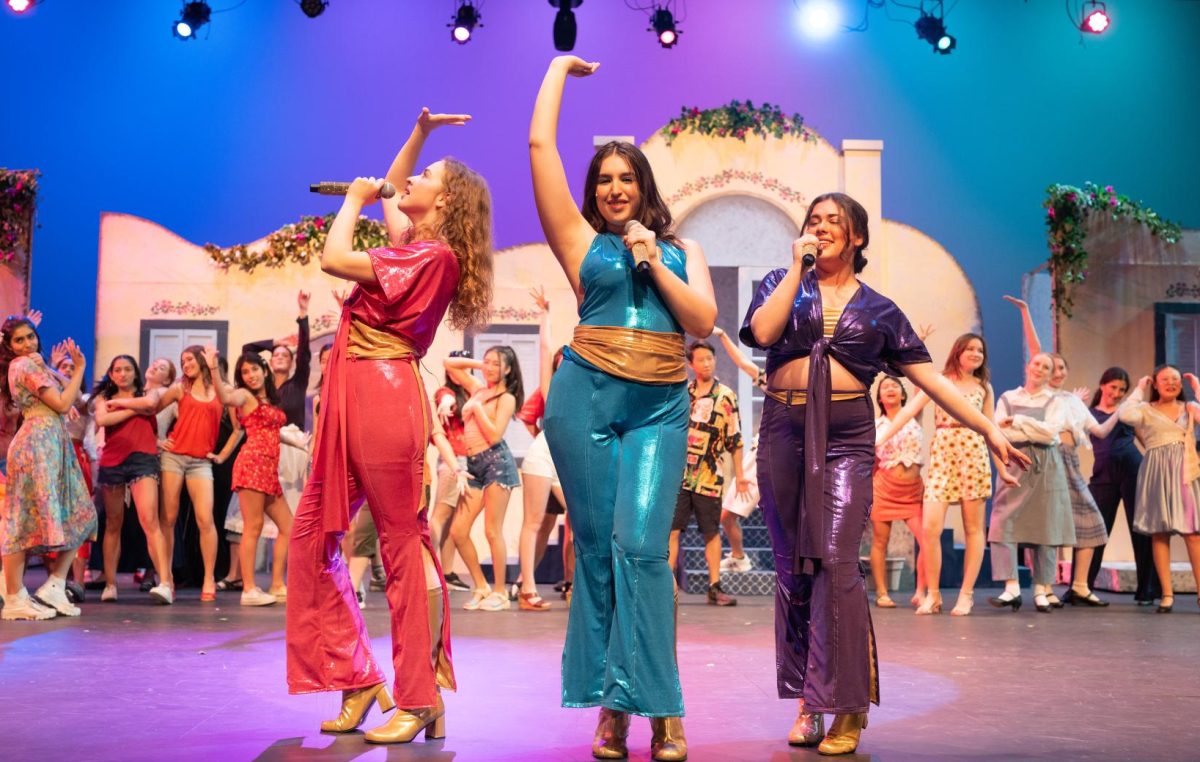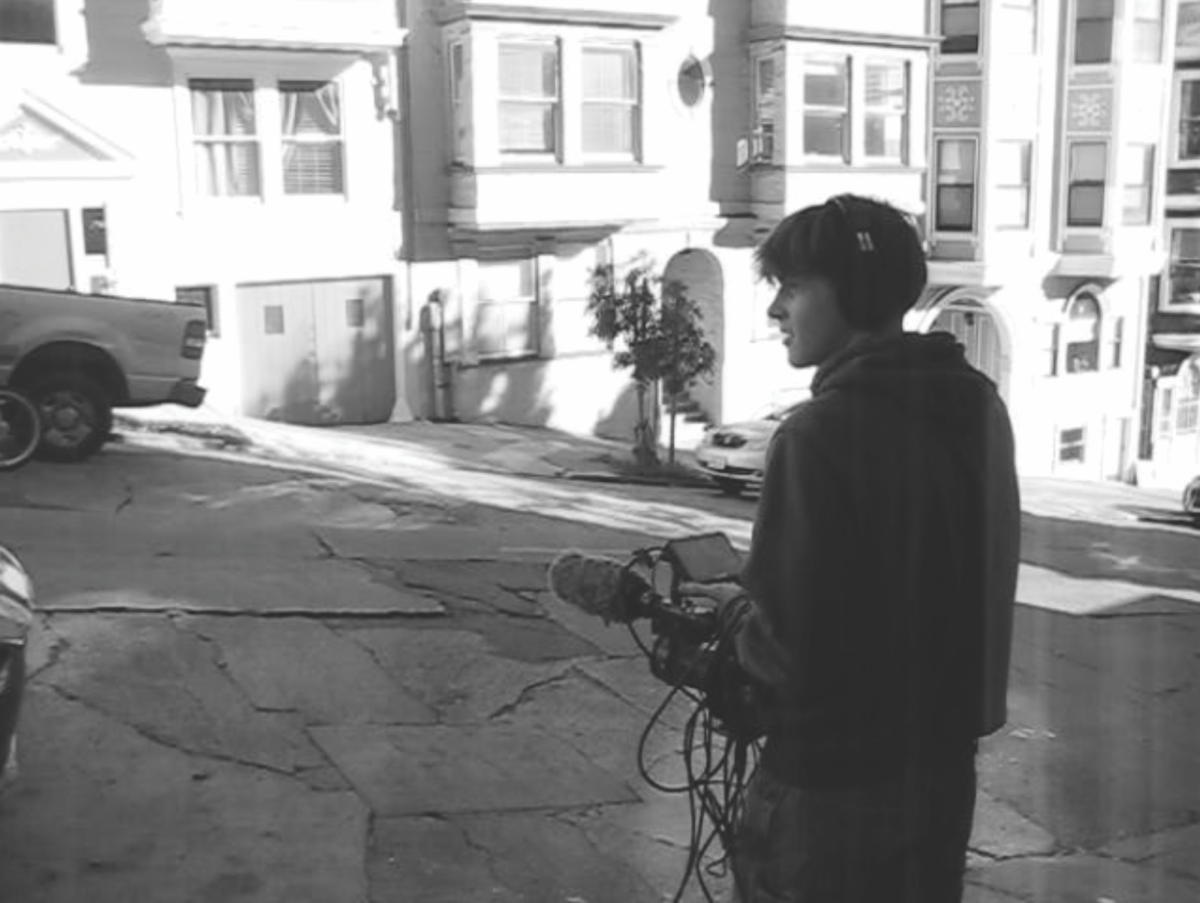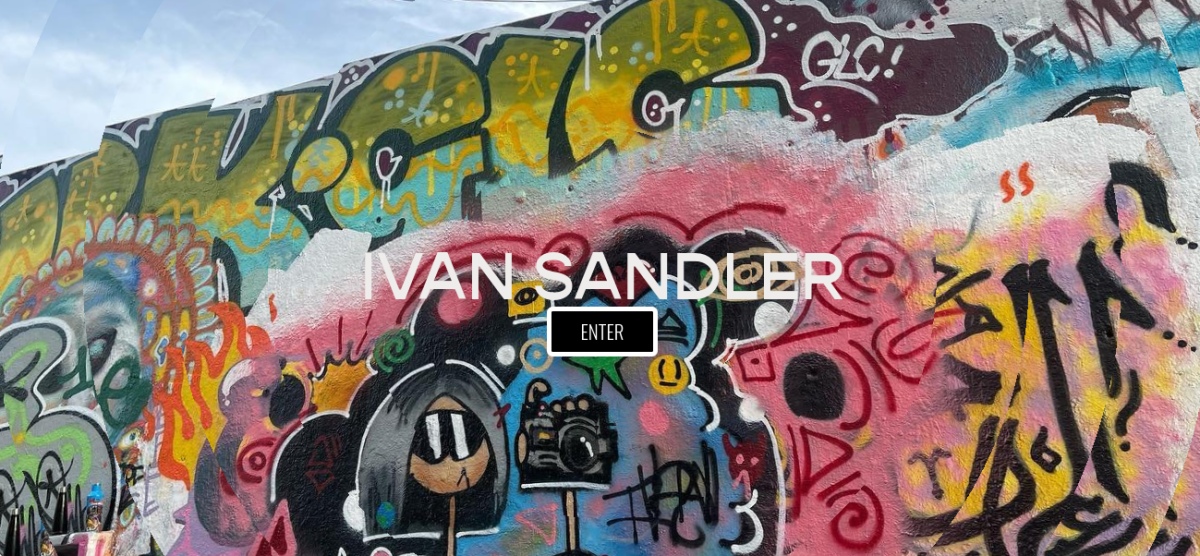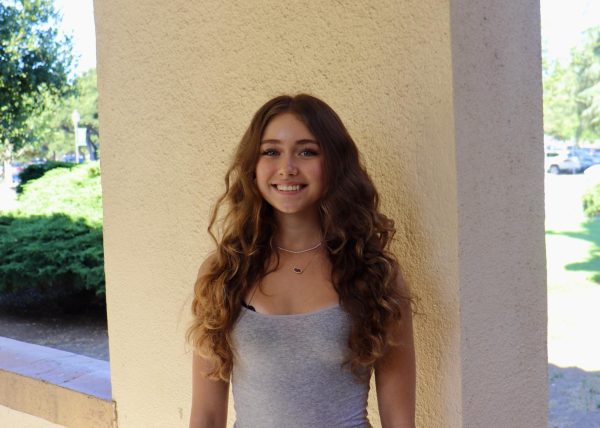Anyone who has watched Paly Theatre’s award-winning productions can appreciate the dazzling dynamo jumpsuits in Mamma Mia, feathery costumes in The Birds, or the scrappy aprons in Radium Girls.
The hard-working tech crew that works behind the scenes is truly what makes these shows come to life. If you have ever watched a Paly theatre production, you may fail to notice the carefully curated and handmade costumes that place the audience right into the world of the show.
The design process begins months before the show is seen by the public–the costume team works hard to ensure the performance expresses the story through specific elements of the designs.
Paly’s current production of Hamlet is set to open on April 13, 2024. The masterminds behind the designs are sophomore Vasim Jamil Fee, senior An Tran and freshman Thomas Pitman.
“We analyze the characters, we analyze the storyline, the time period and anything that we need to keep in mind for the design process,” Tran said.
Tran explains what goes into her thought process and inspiration when designing costumes.
“I’m very into studying high fashion trends,” Tran said. “It helps me understand how I can communicate something through silhouette, texture, fabrics and color.”
There is an extensive amount of thought that goes into each character’s costume, using the different elements to communicate a message to the audience. Through costumes, the team can create a visual representation of the character’s growth, relationships and interactions.
“We tend to give one iconic color to each character and if we change those colors, that’s signifying character growth or their arc,” Tran said.
Throughout this process, Sarah Thermond, Director of Paly’s theater program watches as the team works hard behind the scenes. Thermond agrees that the work of the costume department is crucial when planning the show.
“It’s very cool to see how the hypothetical design ends up getting realized through either student creations or pieces that they find and buy,” Thermond said. “As the show develops and they start talking to other tech departments, adjustments might get made from the original plan.”
Costumes are essential to making an engaging experience for the audience, as well as a more realistic feel for the actors. Thermond emphasizes the important role that costumes play in the overall performance of the show.
“Costumes are so integral not only to communicating the story to the audience, but also to helping actors feel like they are truly a part of the world of the play,” Thermond said. “Our designers check rehearsal reports and actor blocking to make sure that their costume is accurate, creative and functional for that performer.”
While each play is different, the team uses its existing resources to its advantage although they are sometimes forced to think outside the box. Costumes from previous productions are stored in the PAC and Haymarket Theatre until they are ready to be used again.
“When we can, we try to reuse as many costumes as possible,” Tran said. “But if not, we tend to buy any niche items we need, like a weirdly colored apron or a graphic tee.”
Because of the overwhelming action of the performance, the audience often is unaware of the thought that goes into every costume.
“I think costumes, in particular, can be overlooked because clothing is something we assume is widely available; especially when you do a modern show, you figure: ‘Oh, the actors can just wear their own stuff,’” Thermond said. “But there is always much more to it than that, even when actors do bring things in.”
The performers also have a deep appreciation for the hard work and dedication that goes into the costumes in the play. Sophomore Aashi Agarwal, a dedicated member of the Paly theater program, believes that costumes can begin to tell a story before the actor even says a line.
“Costumes usually help me get into character more, because they help me realize that everything is more real,” Agarwal said. “Costumes set a lot of things, like the time period and help inform the personalities of different characters”
Actors find that a realistic costume helps not only set the mood of the show but also helps them to truly embody and understand the characteristics and mannerisms of their characters.
“A good costume can make me feel confident and like I am the character,” senior actor Eloise Dumas said. “Especially if you’re doing a period piece and you’re wearing something cumbersome that they actually would have worn at the time, then you physically are restricted in the same way the character would have been back in that time period.”
The costume team does not go unnoticed by the actors, they are the ones who see, wear and appreciate the work that is put into the costumes.
“They [costume designers] deserve all the credit in the world because they put in so much more work than people realize,” senior actor Jack Champlin said, “So many hours and so much thought into every single character, and I really admire it.”
People usually acknowledge only what is happening on stage, and what happens behind the curtains goes unseen. Thermond emphasizes the under-appreciation of costume designers.
“I feel like all tech elements are underappreciated, which especially makes me sad, because here at Paly nearly all tech elements are student-designed, and student-created,” Thermond said.
Not only is costume design overlooked by the audience, but many challenges come with the role of designing costumes.
In a typical performance, costume designers are given fewer than three months for the overall design process, from designing to having them on the stage. The challenge of timing arises when the products aren’t where the team would like them to be by a certain point.
“There’s never enough time to get where I’d like to be with the costumes and they’re never perfect by opening night, and we have to make changes after that,” Tran said.
Jamil Fee, co-costume designer, elaborates on the race against time and how their processes change with the different prep periods.
“If we have a longer setup period, then we go through more design processes,” Jamil Fee said. “For example, we will create a mood board with our entire design crew, and we’ll get more reference images and designs drawn.”
A quick change is where an actor has to quickly change out of one costume and into another, given a short period. Quick changes can be a big challenge for both the actors and the design team, as complex costumes can be difficult to change in and out of.
“[Quick changes are] very messy and we try to be quiet about it, but we’re not,” Tran said.
The costume design team works tirelessly to bring the show to life, and with their help the production can run smoothly and transport the audience into the world of the show.
Through the ups and downs of costume design, the final designs play a significant role in transforming the play from a mere vision to an engaging presentation on opening night.
“It almost feels like all of the rehearsals have been leading up to that moment,” Champlin said. “It feels like [with costumes] it finally is becoming the show.”











